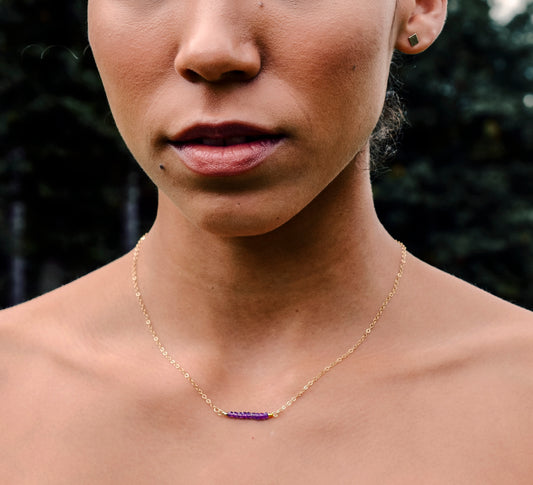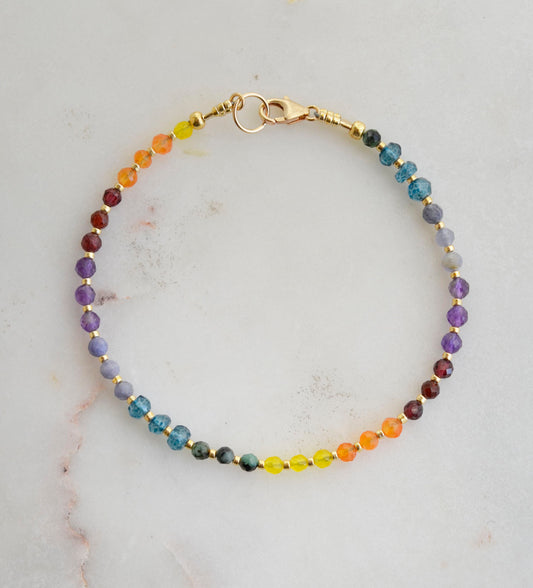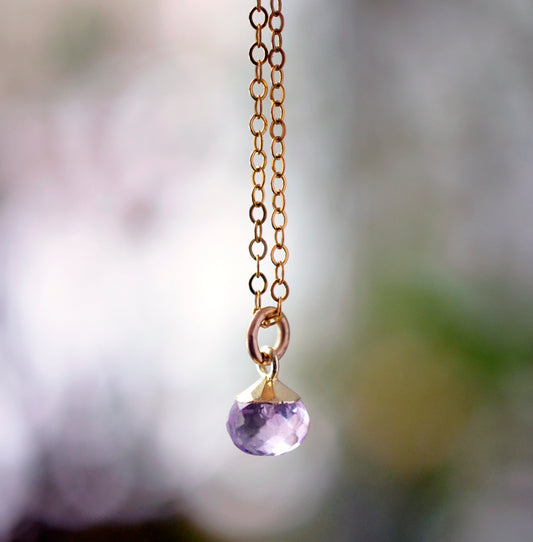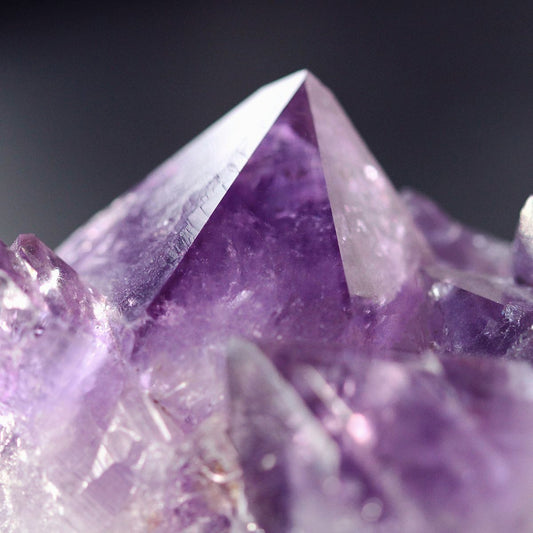Amethyst Crystal Meaning & Properties
Are you in need of tranquility midst a chaotic day? Do you seek to nurture your inner wisdom and spiritual growth? Amethyst is the gemstone that can elevate your energy and bring inner peace.
For crystal enthusiasts of all levels, amethyst is a must-have in any crystal collection. Keep reading to discover the science, history, and healing properties of this wonderful gemstone!
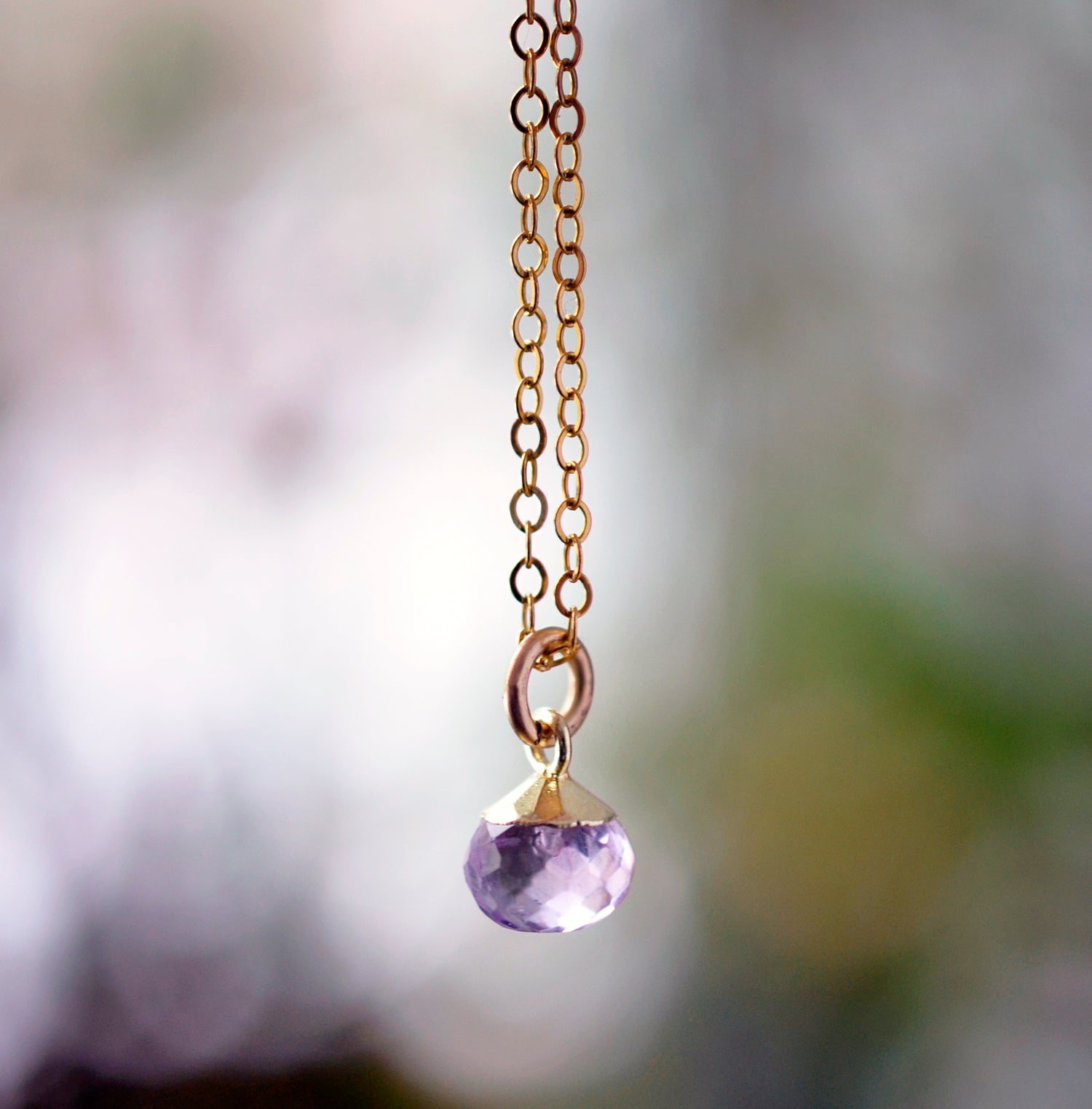
First the science. What is Amethyst?
Found in a variety of formations, amethyst is the purple, or violet, variety of quartz. Quartz is a hard, crystalline mineral made of silicon dioxide (silica). When other trace elements mix with the silica we get our other beloved quartz varieties, such as rose quartz, citrine, or smokey quartz.
Amethyst occurs when quartz is subjected to natural irradiation and iron impurities. It has a glossy, or vitreous luster, and is found all over the world including the United States, Siberia, and South America. The most famous deposits are from Brazil and Uruguay.
Types of Amethyst
-
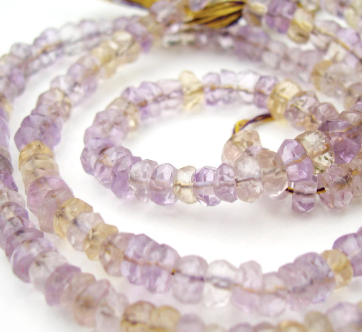
Ametrine
A combination of purple amethyst and citrine. This gem occurs naturally, but most on today’s market is treated.
-
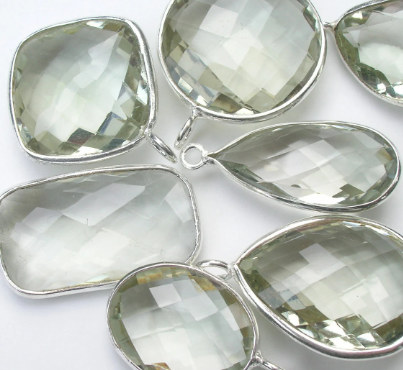
Prasiolite
A pale green amethyst. It rarely occurs in nature, with a few deposits from Brazil, Poland, and Canada. Most Prasiolite on the market is heat treated and irradiated purple Amethyst.
-

Grape Agate
These little Amethyst crystals form in little balls resembling clusters of grapes!
-

Pink Amethyst
Is amethyst that contains Hematite, which gives it a pinkish tone. It was recently discovered in Patagonia, Argentina.
-
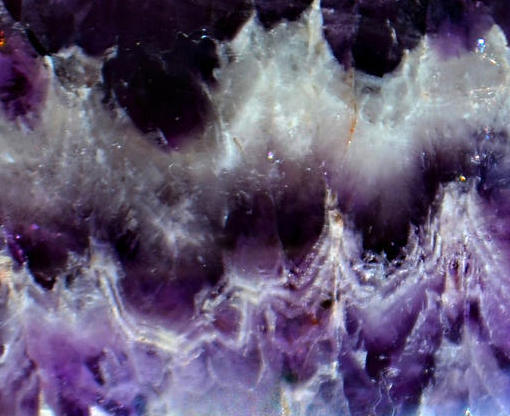
Chevron Amethyst
Also known as Dog Tooth Amethyst, is a mix of purple amethyst with white quartz that has a V-like banding. It’s often found in India, Russia, or Brazil.
-
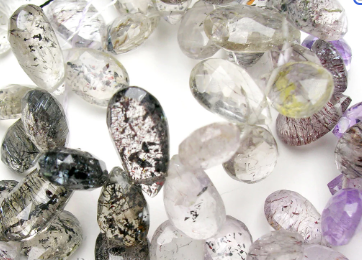
Moss Amethyst
Amethyst containing branch/vein-like, or “moss” looking crystal inclusions, which can be dendrite or tourmaline.
History of Amethyst
Today, amethyst is popular and reasonably priced. However, in the past, it was regarded as precious and expensive, limited to those who had the means to purchase it. It adorned high-end jewelry, crowns, and clothing, rivaling rubies, sapphires, and emeralds. It wasn’t until the 1800s, with the discovery of vast amethyst deposits in South America, and its sudden abundance, that it became accessible and widely distributed.
Throughout the world, amethyst has a rich and colorful history, with stories that have stood the test of time. Here are just a few tales that have endured to this day.
Ancient Greece:
The word amethyst comes from the greek word Amethystos, meaning not drunken, and like many things from Ancient Greece, has a myth surrounding it.
Dionysus, the god of wine and revelry became infatuated with a maiden named Amethystos. Wishing to remain chaste and make a pilgrimage to Artemis’s temple, Amethystos rejected him. Enraged at the rejection, Dionysus sent two tigers after her. Realizing her danger, Artemis turned Amethystos into a pure crystal as protection. Upon seeing what his anger caused, Dionysus cried tears of wine (or wine-colored tears), turning the crystal into purple amethyst. Thus, the ancient Greeks, and Romans, drank from amethyst vessels or dropped amethyst crystals into their wine to remain clear-headed and to prevent drunkenness.
Ancient Egypt:
In ancient Egypt, amethyst was mined at a place near the Nile, and was believed to ward off negative spirits and ill fortune. Cleopatra was said to have worn and amethyst ring.
Catholicism:
In Catholicism, amethyst was traditionally worn to protect against unholy drunkenness and was thought to represent the suffering of Christ and the wine consumed at mass. Many bishops wear amethyst rings today.
Renaissance:
During the Renaissance it was worn by the nobility as a symbol of status and wealth.
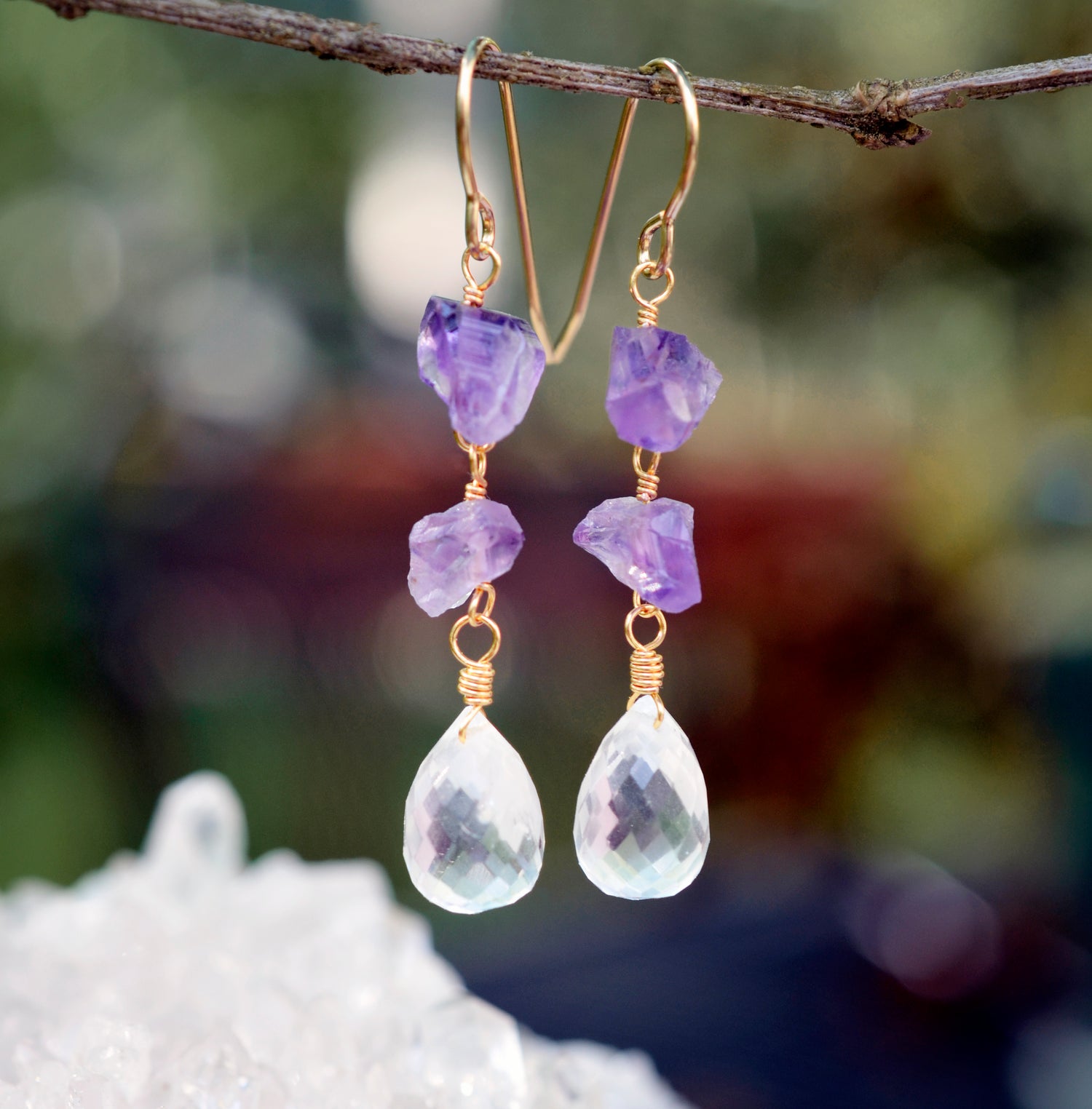
Amethyst Crystal Meaning
Amethyst is a stone for healing and balance. It can help you navigate the intricate depths of your emotions and strengthen your connection with your true self. This gem is a great tool for those going through a rough patch, since it’s believed to clear the mind and help you understand the root of your issues.
Amethyst is also a high vibrating, multi-chakra stone associated with the third-eye and crown chakras. It’s believed to alleviated tension, stress, fear, and worry by clearing those energies through the crown chakra.
Since it’s associated with the crown chakra, it’s also said to attract knowledge and aid in achieving spiritual enlightenment so you can discover your true meaning in life.

How to use Amethyst crystals:
Wear Them!
Our favorite way to use amethyst crystals is to wear them! Keeping them on your body serves as a reminder of your intentions and allows their energy to envelop you. It promises that its peaceful, healing energy is always present.
Place them in a Room or Office
Place an amethyst in a space where you will see it, such as a sacred space or office. Since this gemstone has a calming affect, it can sooth the room, helping it to become a more peaceful place.
Meditate
When placing amethyst over the third eye or crown chakra, its vibrations help calm the mind and guide you toward a peaceful state. It can also be placed in the palms during meditation.








